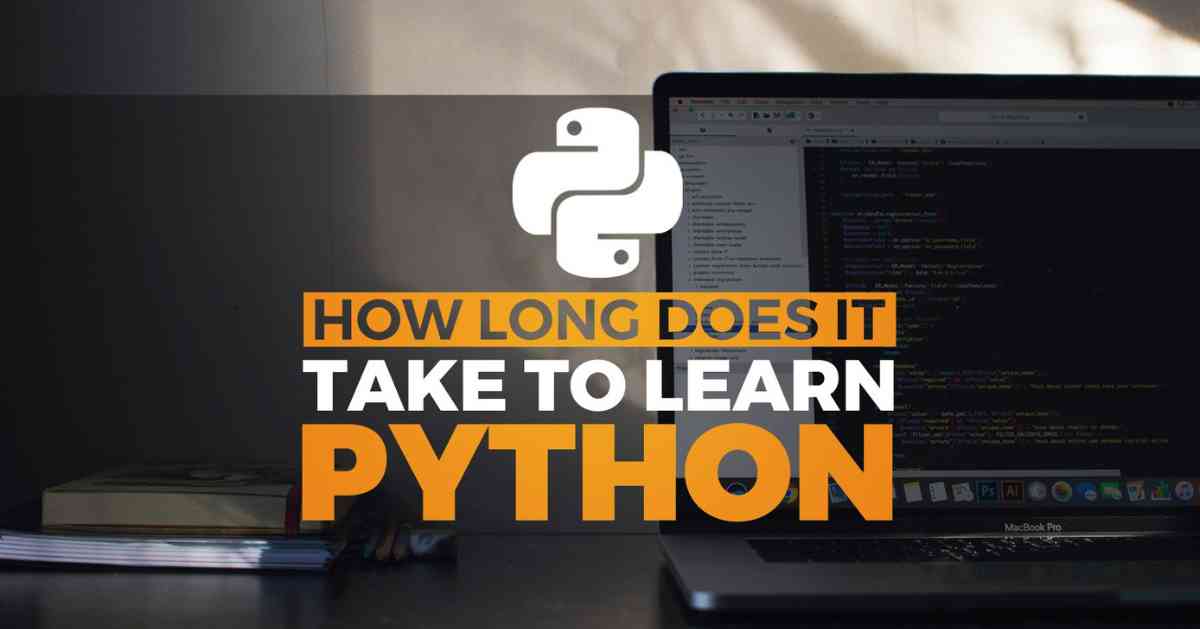How Long Does it Take to Learn Python?

Technological advancements have become an integral part of our lives, and we often take these innovations for granted. Whatever device you are using today, be it a smartphone, smart wearables, or a voice assistant is programmed in a specific way to perform different functions. Computer programming has changed a lot over the years, and today we have around 700 different programming languages. Some of the widely-used programming languages include Python, Java, C++, JavaScript, Rust, SQL, R, and HTML.
Java, which dominated the software development market for around a decade, is now being challenged by Python. There are many surveys like Stack Overflow or TIOBE index that support the fact that Python is one of the fastest-growing programming languages and is loved by developers for the purpose of web development and data science. For instance, Python won the TIOBE programming language of the year award for four consecutive years until 2020 with a positive jump of 2.0% for the year. Apart from data science, Python is making its presence in the mobile application domain, game development, and even in embedded systems (larger).
Professionals who are interested in learning Python and seeking Python training in Bangalore should first know how long it can take to master the language satisfactorily. This article lets you learn more about Python and how you can learn it in a short time.
An Introduction to Python
Python is a high-level, interpreted, and object-oriented programming language used in various business sectors today. What makes Python different from other programming languages is its ease of comprehension, flexibility, rich set of libraries, high-level built-in data structures, dynamic binding, and speedy prototyping. Developers prefer using this language for rapid application development as it supports packages and modules that facilitate code reuse and program modularity.
Python is dominating every kind of application you can think of – web development, game development, scientific computing, data science, mapping and geography, system automation, statistical analysis, and numerical computing. Some of Python’s popular libraries used for these applications are NumPy, SciPy, matplotlib, pandas, Pygame, PyKyra, and Django. All of these Python features have made it quite powerful and thus it is dominating the global job market.
Python developers are in high demand for accomplishing a variety of tasks like site reliability, cloud infrastructure, web scraping, data analysis, security, APIs, mobile development, and so on. When you navigate through any job portal for an IT job, you will find Python programming skills in the requirement for most of the postings. Renowned job portal Indeed found in its survey that Python is the second-highest paid computer language with an average base pay of over USD 118K.
Learning Python from Scratch
Today’s technological landscape is so dynamic that whenever you hear of any programming language, a question would immediately pop up in your mind – how long will it take to learn? Well, when it comes to Python, people will tell you that it is easy to learn because of its simple syntax and English-like commands. However, Python incorporates abundant libraries, file extensions, various frameworks, and a vast number of modules. So, it may take you a few months to learn Python if you are planning to work on it full time.
Moreover, Python is regularly improving and still evolving, so one would need to update themselves continuously. If you have prior knowledge of any other programming language, you can learn Python basics and work on simple scripts within two to three weeks. You can then move on to learn its advanced concepts in the context of the problems you are trying to solve in your assigned project. In such a case, you would not need to learn all of its frameworks and libraries; only a few of them would be enough to meet your requirements.
Some important tips – Don’t spend too much time learning the syntax of Python as many tutorials make you do. First, figure out what you want to use Python for – is it for game development, web development, or data science, and then learn its building blocks accordingly. For example, if you want to build a website with Python, learn how to use Django. Using the right syntax can go along with the application. You can also set up a project using an IDE like PyCharm and start coding. Moreover, beginners explore the GitHub platform and learn how other developers have used Python for various applications.
How to fast-track your Python learning? Well, professionals who can’t dedicate time to learning Python on their own often switch to a reliable online training program. There are various Python training courses that will help you learn everything from scratch and move on to advanced concepts with ease. The instructors for such courses are often highly-qualified and know what employers expect from a suitable candidate for a Python-related job. Moreover, you gain the necessary practical exposure by working on some industry-oriented projects and using different Python libraries and modules to complete them.
So, are you ready to embrace a python training program and learn the language within a few months?
